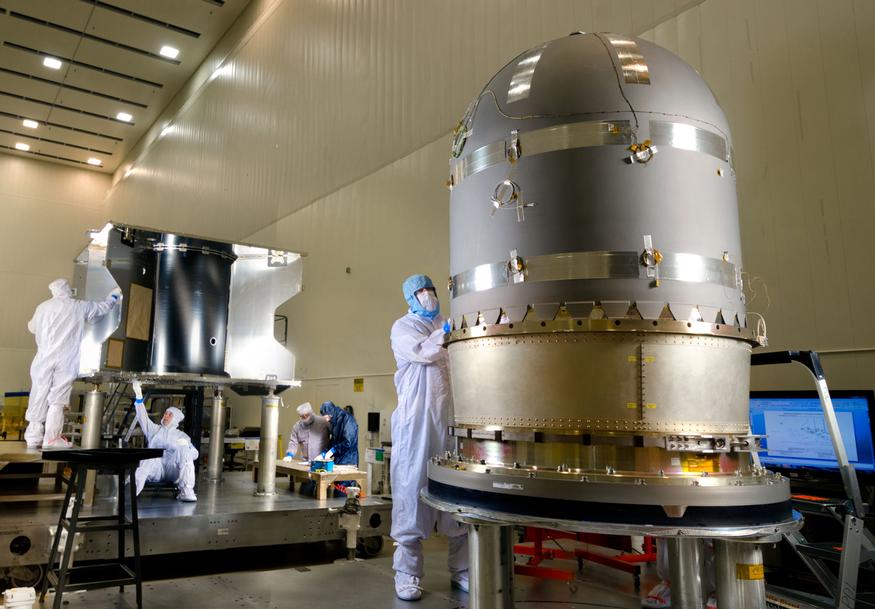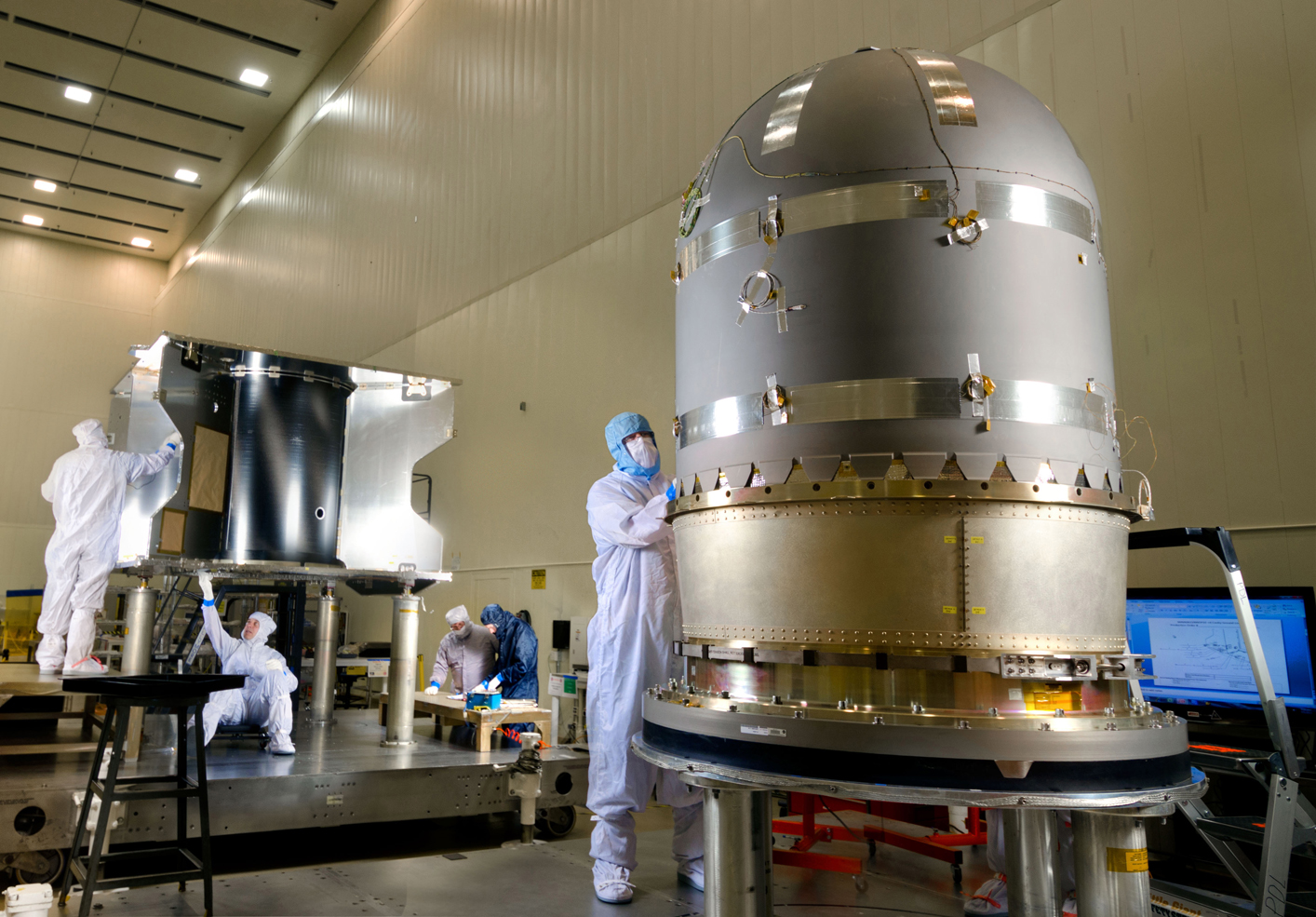NASA’s MAVEN Spacecraft and Propellant Tank

| Credit | NASA/Goddard Space Flight Center/Lockheed Martin |
|---|---|
| Language |
|
Lockheed Martin has installed the propellant tank on NASA’s MAVEN spacecraft, which it is building at its Space Systems Company facilities near Denver. In addition to the large tank, many of the primary propulsion components including all 20 of the spacecraft’s thrusters have been installed.
This photo taken on March 3 shows the large hydrazine propellant tank prior to integration with the core structure of the MAVEN spacecraft at a Lockheed Martin clean room near Denver. The tank will hold 450 gallons of hydrazine propellant and is 6 feet 2 inches tall. The tank was built by ATK Aerospace Group, Commerce, Calif. The primary structure in the background is cube shaped at 7.5 feet x 7.5 feet x 6.5 feet high. Built out of composite panels comprised of aluminum honeycomb sandwiched between graphite composite face sheets, the entire structure only weighs 275 pounds.
Mission Information
The goal of the Mars Atmosphere and Volatile EvolutioN (MAVEN) program is to determine the role that loss of atmospheric gas to space played in changing the Martian climate through time. MAVEN will determine how much of the Martian atmosphere has been lost over time by measuring the current rate of escape to space and gathering enough information about the relevant processes to allow extrapolation backward in time.
MAVEN’s principal investigator is based at the University of Colorado at Boulder’s Laboratory for Atmospheric and Space Physics. The university will provide science operations, build instruments, and lead Education/Public Outreach. NASA Goddard Space Flight Center in Greenbelt, Maryland, will manage the MAVEN mission and provide instruments. Lockheed Martin of Littleton, Colo., will build the spacecraft and perform mission operations. The University of California-Berkeley Space Sciences Laboratory will build instruments for the mission. NASA’s Jet Propulsion Laboratory, Pasadena, Calif., will provide Program management via the Mars Program Office, as well as navigation support, the Deep Space Network, and the Electra telecommunications relay hardware and operations.
More information about MAVEN is online at http://lasp.colorado.edu/home/maven/ and www.nasa.gov/maven/ .

